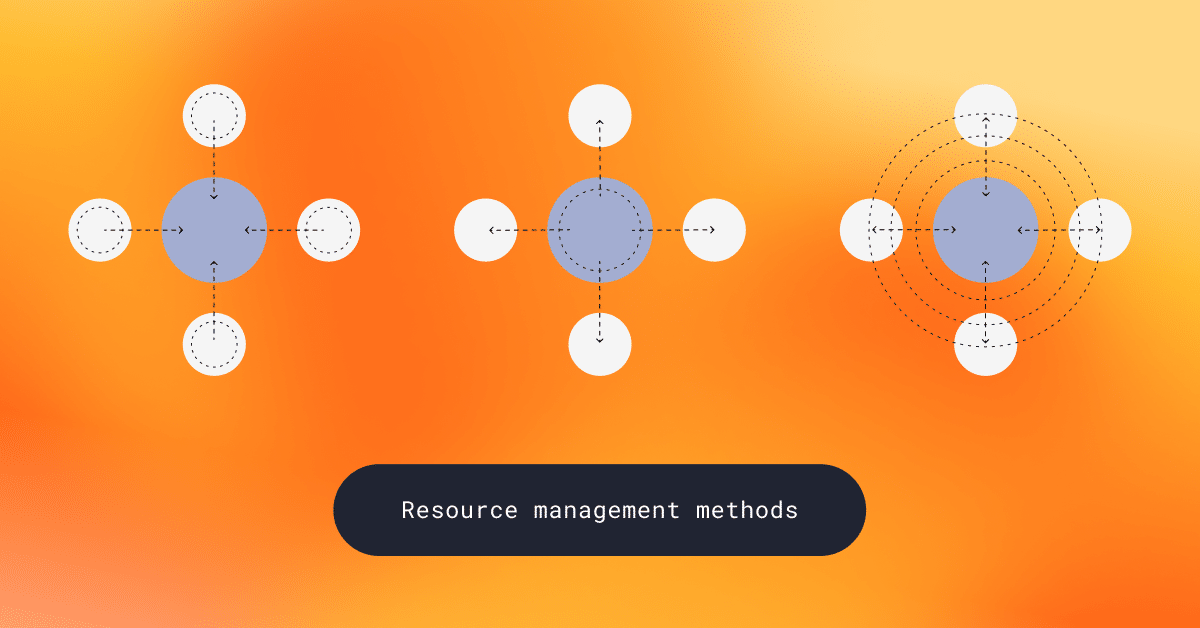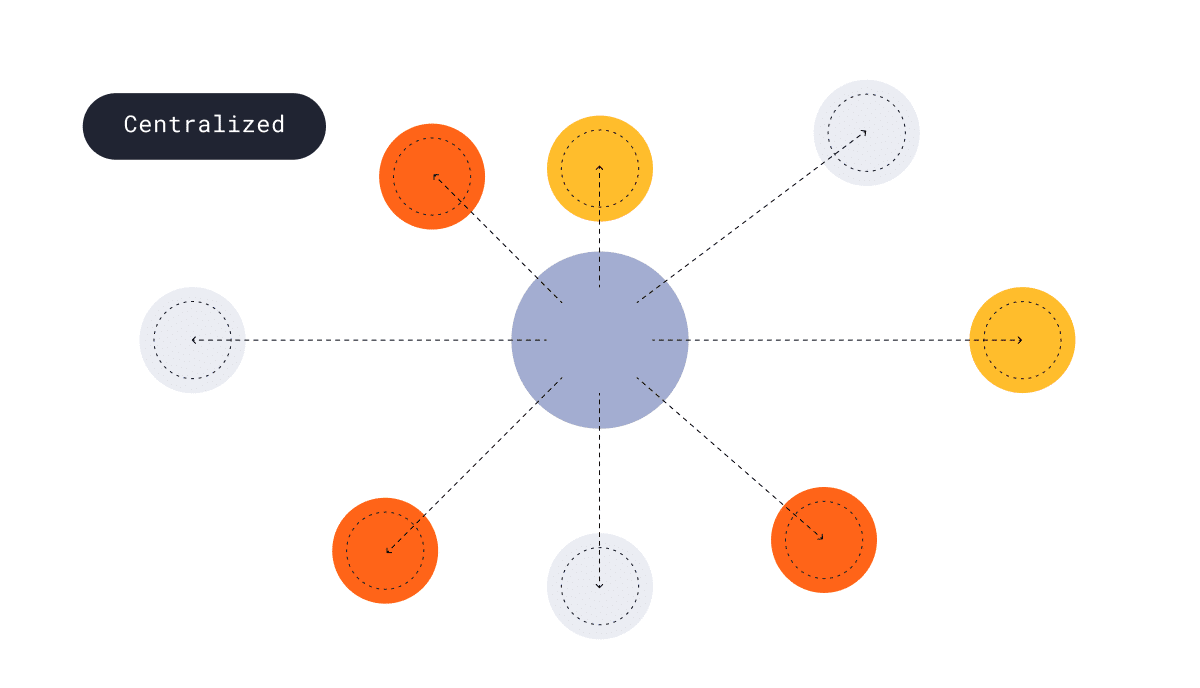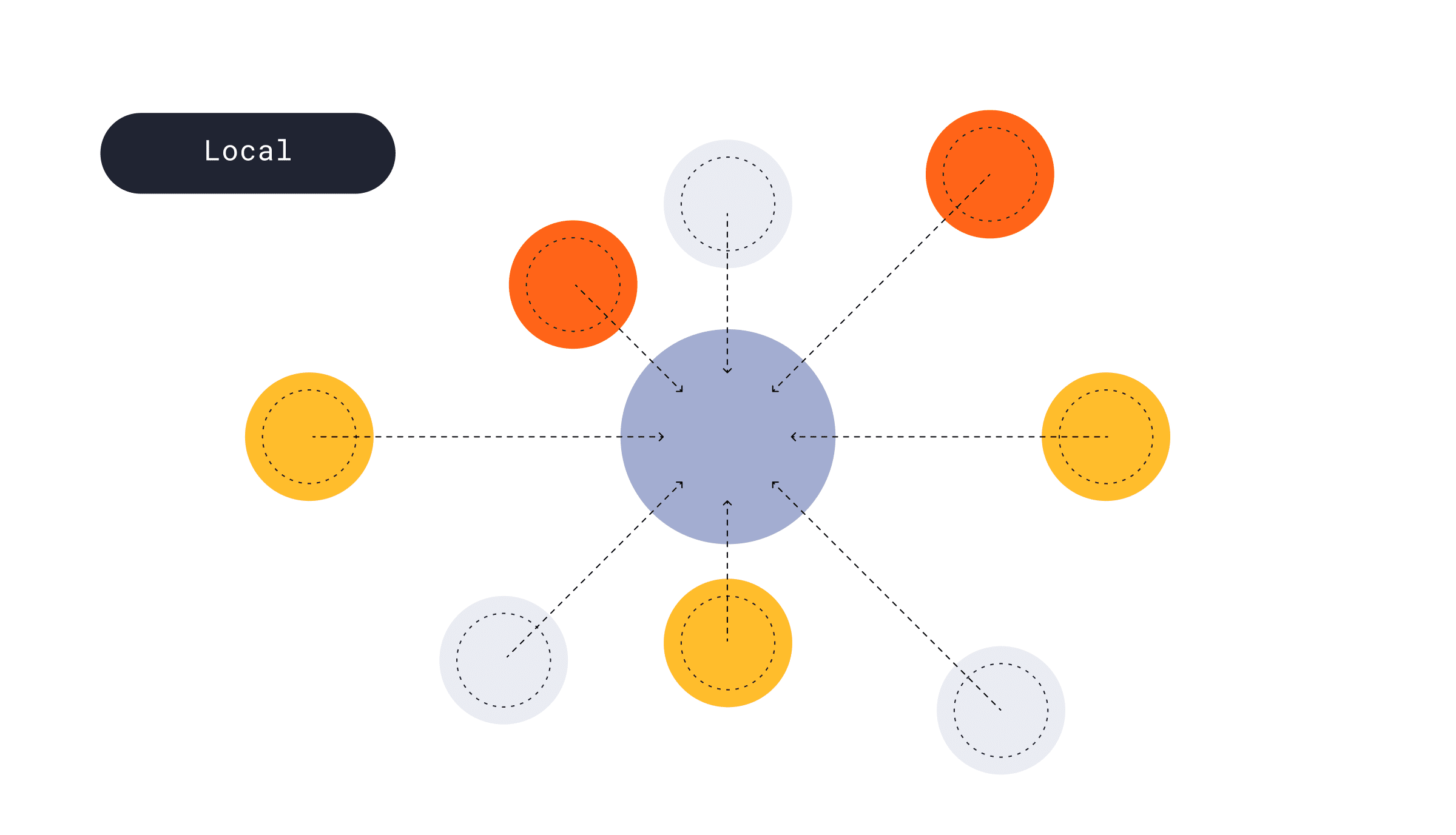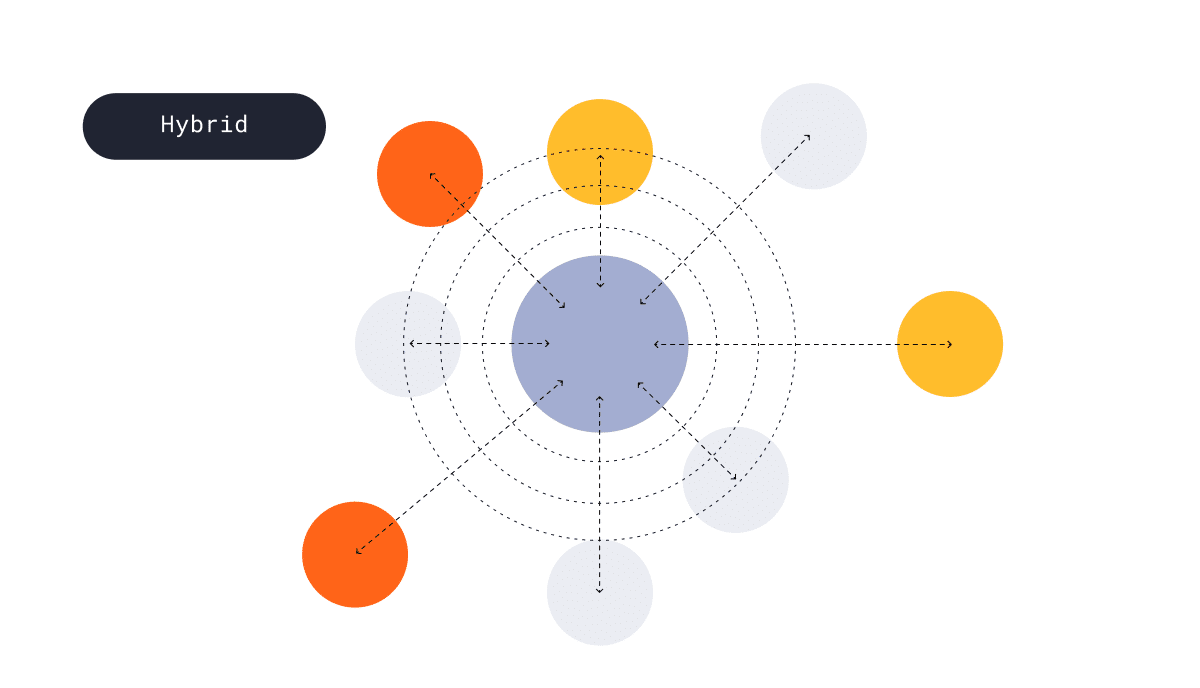3 Types Of Resourcing Models For Resource Management

Having a clearly defined resourcing model for resource management can level up your business operations, increasing efficiency, productivity, and employee retention. This blog can help you find the best resourcing model for your company.
There are different types of resource models. One may suit your particular needs more than others, so it’s crucial to understand the nuanced differences between them. Below, we cover the pros and cons of the three main resource management models and tips on choosing and implementing one.
Transform a resource model into a customized resource management plan with Parallax.
What We’ll Cover
- Types Of Resource Management Models
- Which Model Of Resources Is Right For Your Business?
- How To Make A Resource Model Into A Process
Types Of Resource Management Models
A resource model defines how a business organizes, allocates, and manages its human resources. Without a clear model, organizations often end up wasting resources or experiencing resource shortages, both of which use company time and money inefficiently. No matter what kind of products, services, or productized services your business offers, you can benefit from adopting a resource management model.
The three main resource management models are the centralized model, the local or decentralized model, and a hybrid model that combines centralized and local management approaches. These three human resource management models differ in terms of control, flexibility, and resource allocation. Once you understand each model, you can choose the one that best aligns with your business’s operations, goals, and needs.

Centralized Resource Model
A centralized resource model has a small or central group or individual that makes all human resource management decisions. This central authority could be an entire resource management team or a single manager or executive.
Advantages of the centralized model:
- Makes it easier to see all resources at once
- Increased visibility improves resource allocation
- Can help you stay within your budget and project timeline
- Improves capacity planning so you can effectively plan ahead
- Ensures employees are perfectly utilized so no one gets bored or burnt out
Challenges associated with the centralized model:
- Little to no back-up options in case a part of the central authority fails
- Less collaboration because decision-making is highly concentrated in a small group
- Fewer opportunities for input from employees

Local Resource Model
The local resource model, sometimes called the decentralized model, is the opposite of the centralized model. In a local resource model, individual teams handle their own resource management. Instead of a central authority, the responsibility of resource management is distributed between teams or departments.
Advantages of the local model:
- Promotes collaboration
- Increased collaboration can lead to more innovation
- Aligns with democratic values and systems
- Increases employee buy-in
- If one part fails, the whole system does not fail
Challenges associated with the local model:
- May lead to less cross-department collaboration
- Less standardized systems, policies, and procedures
- No resource management happening at the whole organization level

Hybrid Resource Model
The hybrid resource model is a combination of the centralized and decentralized models. Individual teams hold some responsibility for their own resource management, while some decisions are made by a central authority and passed down. The key to effectively leveraging the hybrid model of resources is to determine which specific resource management tasks are best completed at the local level and which are best completed at the central level.
Advantages of the hybrid model:
- Has the benefits of both the local and centralized models
- Can alleviate some of the challenges of the local and centralized models
- Provides the most flexibility in resource management
- Promotes collaboration within and across teams
Challenges associated with the hybrid model:
- Can be complex and difficult to implement
- Can lead to duplicate work if systems and communication are inadequate
- Less consistency in decision-making than in the centralized approach
Book a free demo with Parallax to see how our software can help you incorporate a resource model.
Which Model Of Resources Is Right For Your Business?
Every model of resources has benefits and challenges. Evaluate each one with your business’s goals and unique culture in mind. As you are evaluating each resource model, also consider the following factors:
- The size of your organization
- The industry you operate in
- Your operational complexity
- The team structures you use
Smaller organizations like agencies may be able to more easily implement and benefit from a decentralized resource model. A local model can promote growth for a newer business or an established small business looking to expand. Medium-to-large businesses will likely have more project success with a centralized or hybrid model. Multinational businesses should consider the hybrid model for the most flexibility between locations.
How To Make A Resource Model Into A Process
After you’ve illuminated which resource model you want to use, it’s time to implement it. While the structure of these models is clear, the way to make the structure fit your organization may not be so clear. Implementation involves transitioning your chosen resource management model into an actionable process by defining workflows, roles, and responsibilities.
Download Parallax’s strategic forecasting e-book to get advice and tools for weekly and long-term resource planning. Once you have a system set up, it’s essential to regularly monitor it to ensure the model is functioning efficiently. Technologies like resource planning software streamline this process and make efficient resource management accessible to any organization.
See Parallax’s Resource Management Software
Human resources are the single most important piece of any project, and putting the right people in the right roles can transform your organization. Using a systematic approach to human resource management with a defined resource model is the best way to ensure success. Maximize the benefits of resourcing models with Parallax’s resource management software. Agencies and studios that use our software see a 107% increase in revenue per billable employee.
Parallax’s software pairs well with any of the resource models. Teams and departments can access real-time utilization insights to empower them to make adjustments to optimize their performance. Those in charge of a resource management plan can also see all active projects to keep an eye on budgets, timelines, and resource utilization across departments and update resource plans to meet financial targets as needed.
Book a demo today to see Parallax in action.

